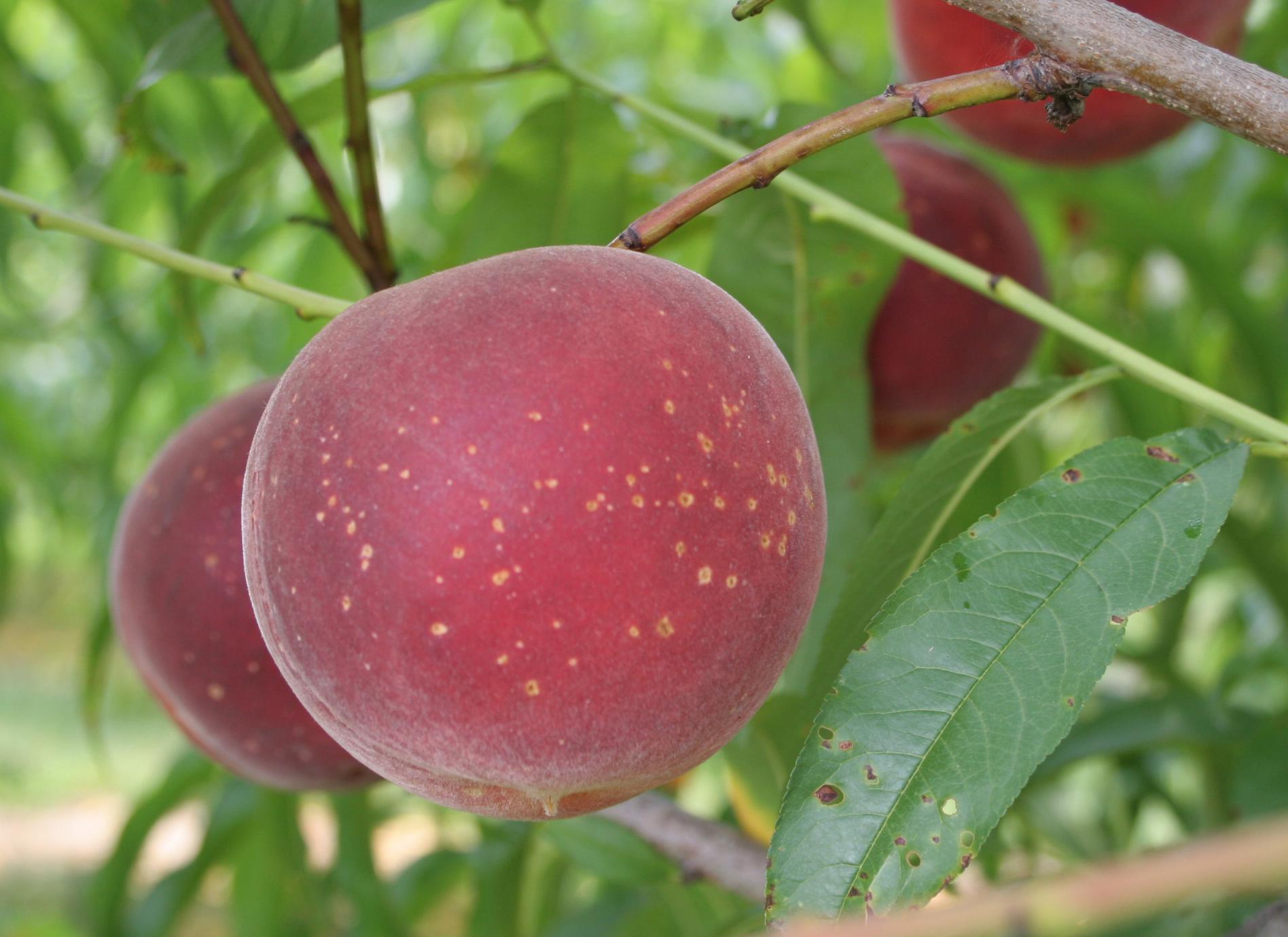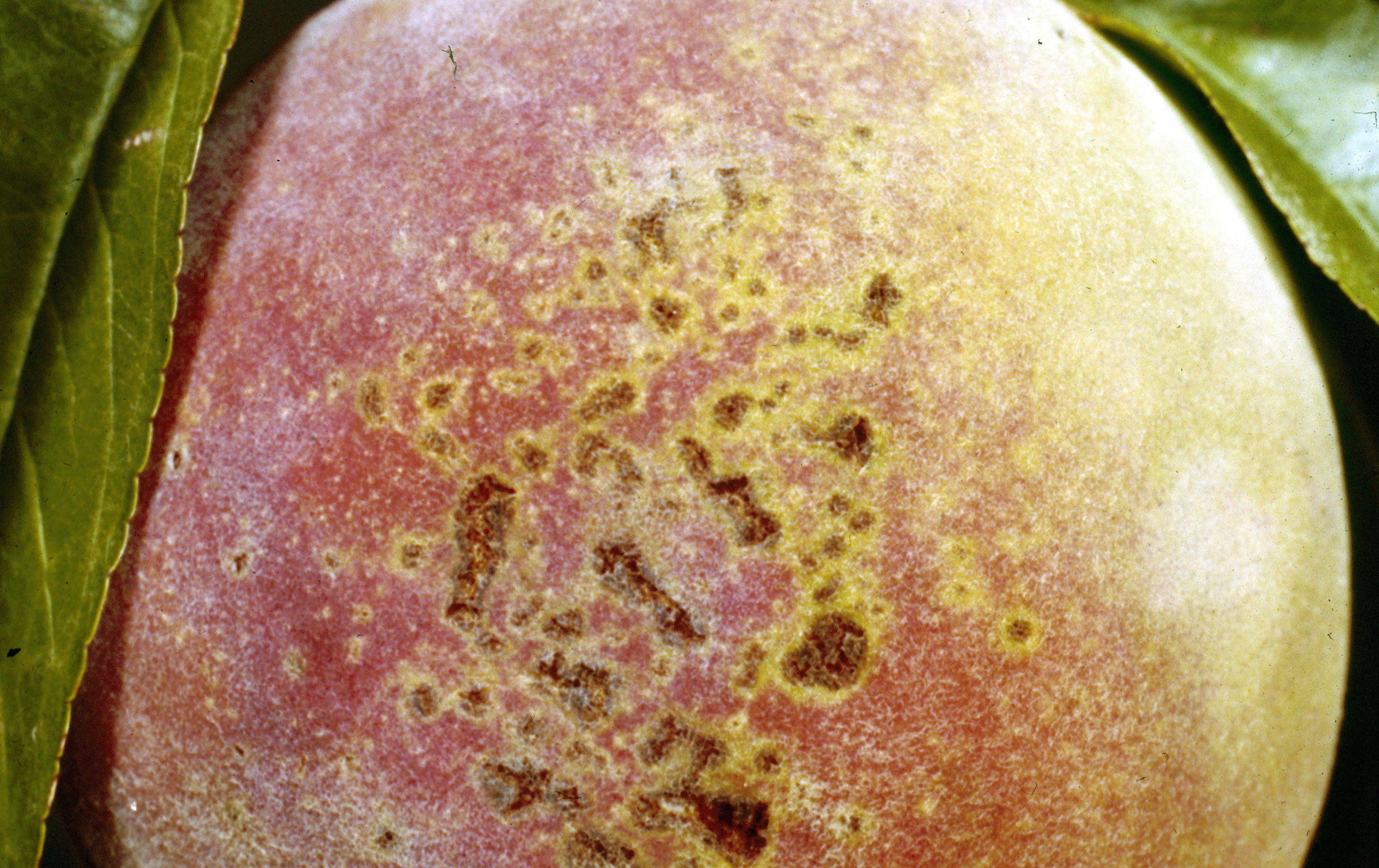Bacterial Spot of Fruit of Peach
Return to Diseases
Bacterial spot of fruit (Xanthomonas campestris pv pruni) is caused by the same bacterium that causes bacterial leaf spot; it infects fruit, leaves, and shoots of stone fruit, but it occurs most frequently in peach. Fruit lesions begin as tiny, water-soaked spots with yellow halos. As fruit enlarge, spots become pitted, increasingly sunken, and crack; gummosis may occur. Lesions are limited to fruit surfaces and do not affect flesh, but cracks may allow entry for fungal pathogens (e.g. the brown rot fungus). Bacteria overwinter in twig cankers and become active at petal fall if conditions are wet and warm. Infection occurs through wounds, especially those caused by driving rains and blowing sand.

Bacterial spot early symptoms on fruit.
(Photo: John Strang, University of Kentucky)

Bacterial spot later damage on fruit.
(Photo: USDA-CES Slide Series, Clemson University, Bugwood.org)
Management:
- Space plants to improve air circulation.
- Apply antibacterial products in early spring; use antibiotics during the growing season if orchard has a history of disease.
- Consider resistant cultivars.
- Avoid planting new trees near infected trees.
- Practice proper sanitation (remove diseased wood before spring growth begins; discard debris away from orchard).
- Plant windbreaks to reduce damage/abrasions by driving rain, wind, and blowing sand.
